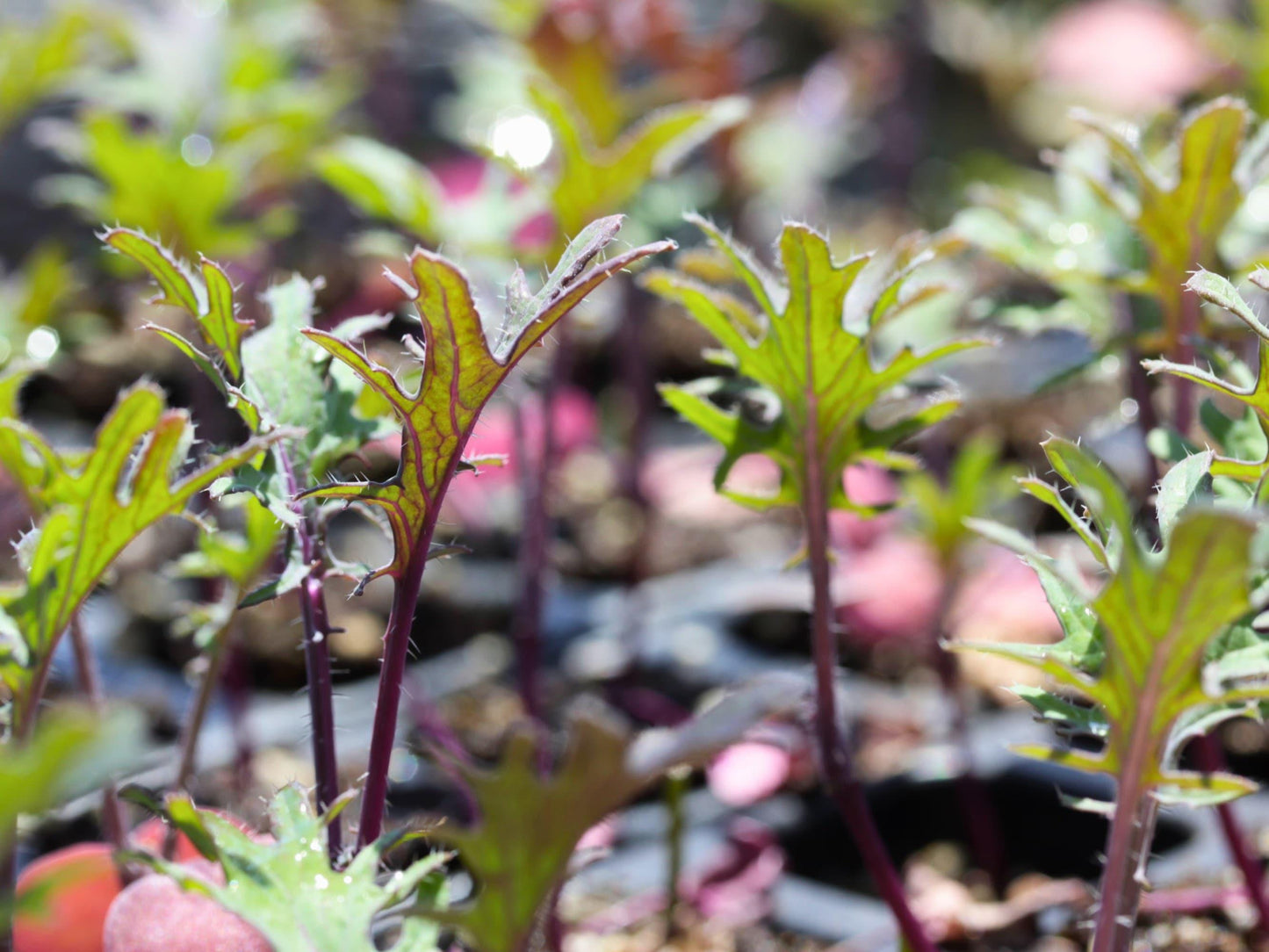Most kale gets sweeter as the first frost hits. Red Russian Siberian Heirloom Kale is sweet all the time making it excellent for mesclun mixes, garnishes and sautéing. The red veins, wavy margins, and foliage that resembles oak leaves make this kale as attractive as it is delicious. Harvest baby greens in just 25 days.
• Scroll down for detailed growing info •
All Nimble NiteCap Seeds are:
• Heirloom
• Organic
• Non-GMO
• Open Pollinated
• Untreated
• US Grown
• growing instructions included
• Regular testing is conducted to uphold the highest germination standards, all the while employing appropriate seed storage techniques.
Sustainable Packaging & Shipping:
• NimbleNitecap seeds are packed in eco-friendly, compostable seed packets. Seed packets are printed in house with vegetable-based inks on biodegradable, recycled materials. (Small plastic bags are infrequently used to prevent the loss of very small seeds.)
• All orders are carefully packed and shipped with tracking via USPS First Class (or Priority, if selected) in padded ECOENCLOSE recycled and reusable mailers, or recycled boxes to protect your items in transit.
Most orders ship out the same or next business day! Please note that this time may be extended during peak season.
• FREE SHIPPING on all orders of $35 or more. Flat Rate shipping no matter how many packets you order.
• DIRECTIONS •
~ planting ~
When to sow outside:
1 to 2 weeks before average last frost. For continual baby greens, sow successively every 3 weeks. Sowing 8 to 10 weeks before first fall frost is recommended as kale tastes best when exposed to cold temperatures.
In mild winter climates, sow in fall for late winter harvest. When to start inside: 8 to 10 weeks before average last frost for transplanting outside 4 to 6 weeks before average last frost.
~ harvesting ~
Harvest young leaves at 2" - 4" for baby greens. Larger, outer leaves can be periodically harvested, or the whole plant can be cut off at ground level. Plants can also be left to overwinter; mulch thickly when ground freezes for harvest the following spring.



















